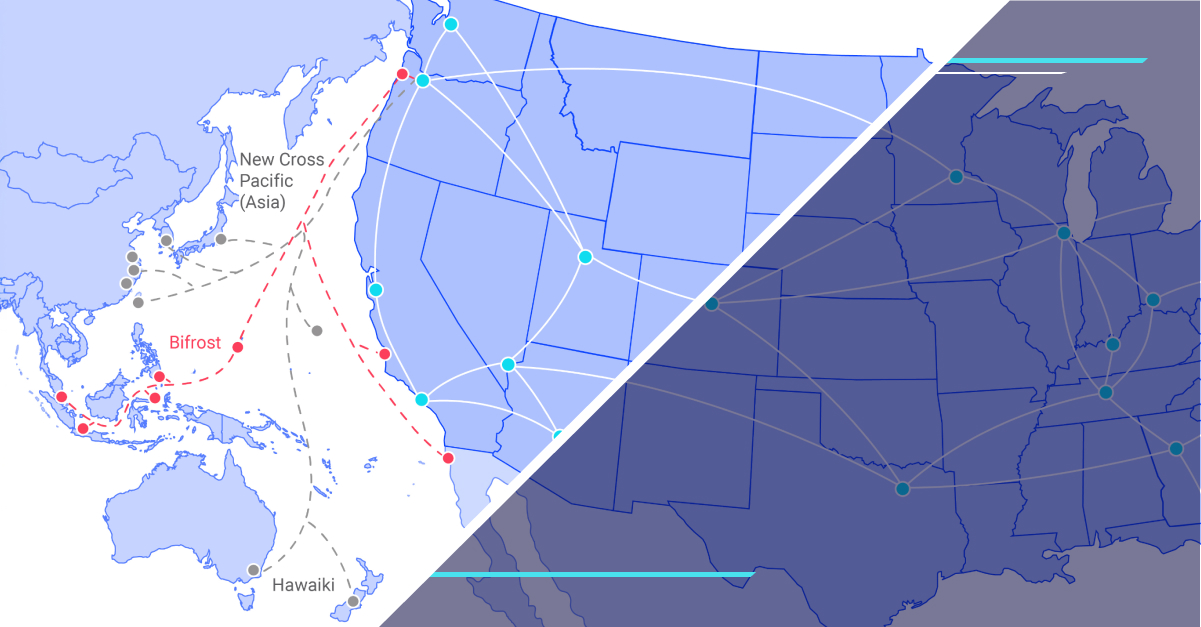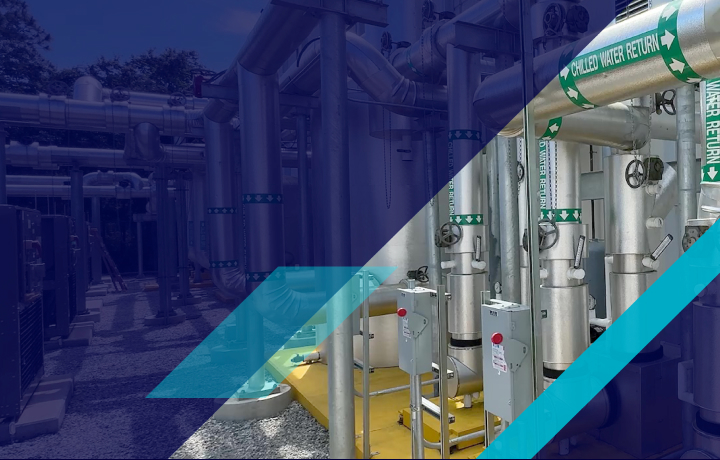How various industries leverage interconnection solutions
Your network setup worked fine five years ago. But now you're trying to sync data between three different clouds, support remote teams across multiple continents, and meet compliance requirements that didn't exist when you first built your infrastructure.

Traditional connectivity methods like MPLS and point-to-point links can't keep up. They're too slow to set up, too rigid to adapt, and too expensive to scale when your business needs change quickly.
Interconnection solves this by creating direct, private connections between your systems, partners, clouds, and networks. Instead of routing everything through the public internet or waiting weeks for new circuits, you get programmable, on-demand connections that adapt to what you actually need.
Different industries use interconnection to solve different problems. Healthcare organizations need HIPAA-compliant data sharing between hospitals. Financial firms require millisecond-fast fraud detection across global branches. Gaming companies must deliver lag-free experiences to millions of players simultaneously.
Let's look at how interconnection works in practice and why it's becoming essential across industries.
Why interconnection matters today
Interconnection plays a central role in how businesses deliver digital services, adapt to new technologies, and stay competitive in a multi-cloud world.
Modern workloads demand low-latency, high-bandwidth connections that traditional networking models struggle to provide. Interconnection gives businesses the ability to move data quickly and securely between environments, which is essential for things like real-time analytics, video streaming, and financial transactions.
It also enables true hybrid and multi-cloud strategies. Rather than being locked into a single cloud provider or limited by slow VPN tunnels, teams can use direct, private connections to shift workloads, balance resources, and maintain business continuity.
Security and compliance are part of the equation too. With interconnection, sensitive data can travel across private, dedicated paths instead of over the public internet. This helps reduce risk and supports industry-specific compliance requirements.
In short, interconnection creates a more flexible, resilient, and secure foundation for modern IT. Learn more about Flexential interconnection services designed to support hybrid and distributed environments.
Interconnection solution use cases by industry vertical
The following sections explore how interconnection supports key industry use cases and why IT infrastructure interconnection capabilities are becoming a competitive advantage across sectors.
Financial services: Secure, real-time trading and compliance-ready connectivity
Financial institutions demand fast, secure, and compliant connectivity to support everything from real-time trading to digital banking services. Interconnection enables direct, private data exchange between core systems, cloud platforms, and fintech partners, reducing latency while meeting strict regulatory standards.
Primary challenge: Milliseconds of latency can impact trade execution, while strict regulations (like PCI DSS) require verifiable data security.
Interconnection solution: Creates ultra-low latency paths directly to financial exchanges and partners, bypassing the public internet to enhance security and simplify compliance.
Forcht Bank, for example, leveraged Flexential colocation and interconnection to improve uptime and ensure compliance across its banking operations. With secure, 100 Gbps private network access and simplified vendor management, the bank strengthened both performance and risk posture. Read the full story
Healthcare: Data privacy, interoperability, and telehealth enablement
Healthcare organizations rely on interconnection to move sensitive data securely between systems, cloud platforms, and care providers. Private, high-speed links support HIPAA compliance, enable real-time access to patient records, and improve interoperability across EHR systems. Interconnection also powers low-latency telehealth services, helping deliver care without disruption.
Primary challenge: Sharing large, sensitive datasets (like medical imaging files and EHR records) between hospitals, clinics, and cloud platforms while maintaining strict HIPAA compliance.
Interconnection solution: Provides private, secure, and high-bandwidth pathways that ensure Protected Health Information (PHI) never traverses the public internet, facilitating interoperability and powering real-time telehealth services.
Media & entertainment: High-bandwidth delivery for content and streaming
Content producers and publishers need high-bandwidth, low-latency connectivity to deliver digital media without delays or downtime. Interconnection supports fast transfer of large files, real-time collaboration across creative teams, and seamless streaming experiences for end users.
Primary challenge: Transferring massive raw video files between production houses, editing teams, and distribution networks without bottlenecks or delays.
Interconnection solution: Offers high-throughput, low-latency connections that accelerate content workflows and enable smooth, high-resolution streaming experiences for global audiences.
MediaNews Group turned to Flexential to power its publishing operations with colocation and interconnection services. With a private 100 Gbps backbone and redundant carrier options, the company improved reliability and performance across both print and digital channels.
Manufacturing & IoT: Edge computing and real-time analytics for automation
Manufacturers and IoT providers depend on real-time data to drive automation, monitor assets, and optimize production. Interconnection brings that data closer to where it is generated, enabling low-latency performance and faster decision-making at the edge.
Primary Challenge: Collecting and processing vast amounts of data from IoT sensors at the edge to enable real-time factory automation and predictive maintenance.
Interconnection Solution: Connects edge data centers directly to central clouds or data processing hubs, reducing latency to enable faster decision-making and more efficient operations.
PassTime, a GPS-based IoT company, chose Flexential to support its asset tracking platform with Hosted Private Cloud and disaster recovery services. This setup provided secure, high-speed access to real-time data, helping the company maintain always-on visibility. Read the full story.
Technology providers / SaaS: Scalable multi‑cloud, API‑driven interconnectivity
SaaS companies and technology providers need flexible, high-performance interconnection to support rapid scaling, real-time integrations, and multi-cloud deployments. Software-defined interconnection allows teams to spin up connections on demand, route traffic efficiently, and reduce latency between platforms.
Primary challenge: Ensuring a seamless, low-latency user experience for a rapidly growing customer base while integrating with multiple APIs and cloud services.
Interconnection solution: Enables scalable, API-driven connectivity, allowing SaaS providers to quickly establish direct links to cloud providers and partners, ensuring performance and reliability as they scale.
Positrak, a SaaS provider serving the auto parts industry, partnered with Flexential to accelerate its growth. By leveraging edge deployments and high-speed interconnection, the company was able to expand quickly and maintain performance during a 40 percent customer increase.
Retail & eCommerce: Omnichannel performance and customer data integration
Retail and eCommerce businesses rely on consistent, high-speed connectivity to power real-time inventory management, personalized shopping experiences, and seamless integration across online and in-store systems. Interconnection supports the fast, secure exchange of data between applications, platforms, and customer touchpoints.
Primary challenge: Integrating data from multiple channels (in-store POS, online carts, mobile apps) to maintain real-time inventory and deliver personalized customer experiences.
Interconnection solution: Creates a cohesive data fabric that links customer touchpoints, supply chain partners, and cloud applications for a unified omnichannel strategy.
With access to a wide range of carriers, cloud on-ramps, and private backbone options, Flexential enables retailers to build the scalable, high-performance infrastructure needed for omnichannel success.
These are just a few of the ways industries are applying interconnection to solve real-world challenges. See more interconnection examples.
Trends driving the need for interconnection
As digital infrastructure evolves, so do the demands placed on how systems connect and communicate. Interconnection is no longer a technical upgrade; it has become a strategic requirement driven by broader shifts in technology, business operations, and user expectations.
Digital transformation and distributed IT
Organizations are moving away from centralized infrastructure and embracing distributed IT models that span data centers, clouds, edge environments, and partner ecosystems. This shift creates a need for faster, more flexible connections between environments. Interconnection enables secure, private pathways that support this complexity without compromising performance.
AI and data gravity
The rise of AI has introduced massive volumes of data that must be processed, moved, and stored efficiently. As data continues to accumulate near the applications and users that generate it, proximity becomes critical. This is known as data gravity. Interconnection reduces the distance between data sources and compute resources, helping organizations get faster results from AI and machine learning initiatives.
Security and regulatory compliance
Whether it’s HIPAA, PCI DSS, or evolving data residency laws, compliance requirements continue to grow. Public internet routes increase risk, while direct interconnection provides greater control over how and where data flows. With private, encrypted links and granular traffic segmentation, businesses can meet compliance mandates more easily and reduce their exposure to threats.
Rising demand for low-latency applications
From real-time analytics to interactive customer experiences, low latency is now essential. Even small delays can impact revenue, satisfaction, and operational efficiency. Interconnection helps minimize latency by connecting workloads and data as close to the user or application as possible. This is especially important for industries like finance, media, and retail, where milliseconds matter.
How businesses can evaluate their interconnection needs
Evaluating your interconnection strategy means looking at both current infrastructure and future growth. Here are the key factors to consider:
- Know where your workloads live
Start by mapping your application and data environments. Are they hosted on-prem, in the cloud, at the edge, or across multiple locations? Understanding how these systems interact helps identify where direct connections could improve performance or reduce risk. - Identify performance and security gaps
Look for latency issues, unreliable connections, or exposure from routing sensitive data over the public internet. Private interconnection can solve these challenges by enabling faster, more secure data exchange between environments. Knowing how to optimize connectivity helps you identify gaps and build more responsive infrastructure. - Look for software-defined interconnection capabilities
Choose a provider that offers a self-service portal to provision and manage connections in real time. Modern platforms, like Flexential Fabric, give your team the flexibility to scale capacity, connect to new partners, or reconfigure traffic flows without manual intervention. - Prioritize flexibility and reach
Ensure your provider gives you access to a wide ecosystem of carriers, clouds, and service providers. The ability to connect across multiple geographies, platforms, and partners is essential for scaling operations. - Validate compliance and security support
If you operate in regulated industries, make sure your provider supports relevant standards like HIPAA, PCI DSS, or ISO 27001. Private interconnection paths help reduce compliance risk and improve data control. - Consider growth and long-term strategy
Your interconnection solution should scale with your business. Whether you’re expanding globally, adopting AI, or modernizing legacy systems, your infrastructure needs to support rapid change without creating new complexity.
Key takeaways and interconnection resources
Interconnection is no longer a niche requirement. It’s the foundation for how businesses manage performance, security, and scalability across distributed environments. Whether you’re in finance, healthcare, media, or technology, having the right interconnection strategy makes it easier to adapt, grow, and compete.
To recap:
- Interconnection supports private, high-performance links between clouds, data centers, partners, and platforms.
- Different industries use it to solve for latency, compliance, interoperability, and data integration.
- Trends like AI, distributed IT, and data gravity are increasing the need for flexible, software-defined connectivity.
- Choosing the right provider means looking for automation, ecosystem reach, compliance support, and future-ready infrastructure.
Explore how Flexential Fabric can help you build the connections your business needs—securely, reliably, and at scale.




